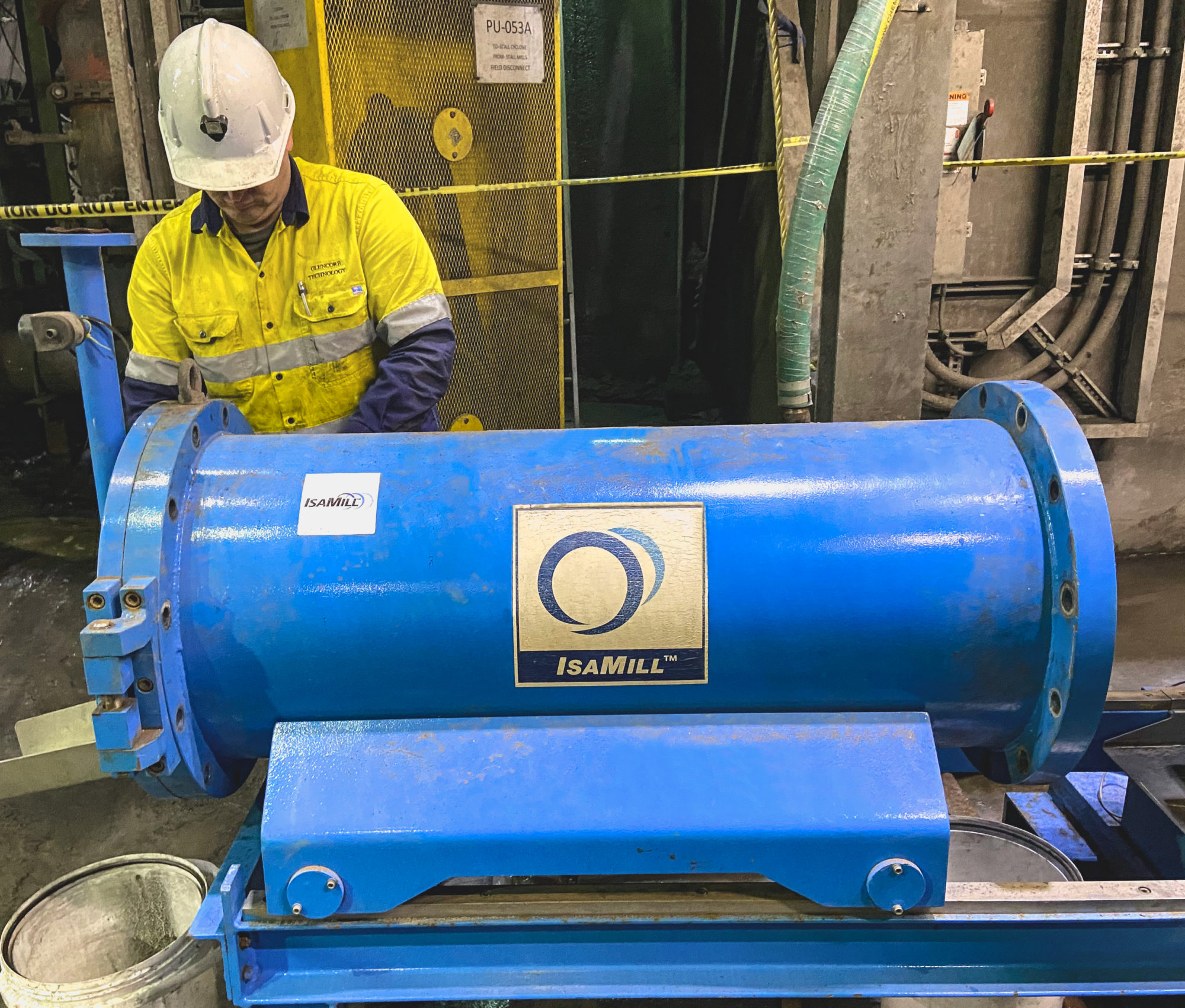Crushing and grinding remains the highest energy consumption in a mining operation. So if an operation can improve grinding efficiency, they get a powerful cost saving and a positive environmental impact. Glencore Technology have been exploring this for some time. But it says now a valued client’s separate agenda to chase the same outcome has led to a valuable demonstration.
Hudbay’s Technical Services – Metallurgy group were actively looking to reduce the energy needs of their primary and secondary grinding circuits. But it took some developments before the combination of technologies were available for what was achieved just recently.
Tests by Glencore Technology some years ago it says showed they had great potential to help secondary grinding shift from a ball mill to a more energy efficient IsaMillᵀᴹ, even though the media available at the time didn’t optimise the results. The largest media suitable was just 5.5 mm. But the gains were still strong. The first tests showed the kWh per tonne dropping from 17.83 to 14.85, or a saving of 16.7%.
Then a second study set out to compare a ball mill against an IsaMillᵀᴹ in a tough application that is usually where ball mills are used: magnetite. The ball mill delivered its p80 of 32 microns for 24 kwh per tonne, and an IsaMillᵀᴹ delivered the same results for just 17 kWh per tonne. That’s a 29% saving, not including the ball mill’s cyclone feed pump.
But Glencore Technology says two things have now aligned to make the proposition powerful. First, the larger 6 MW M20,000 IsaMillᵀᴹ is now available and Glencore Technology is designing a larger 8 MW IsaMillᵀᴹ. And second, the appropriate media is now available at up to 24 mm.
And the timing for Hudbay has been great. “We’re proactively exploring for energy reductions across our comminution assets,” says Chris Marion, Manager, Metallurgy Technical Services at the mining company. Glencore Technology and Hudbay compared processing the feed at Hudbay’s Stall mill in Manitoba which processes copper-zinc ore from the Lalor operation through an existing secondary grinding ball mill against using an M100 IsaMillᵀᴹ.
Marion: “We assumed it would be more energy efficient but were unsure about the performance we’d see, metallurgically.” But the results beat expectations. “The product size distribution mimicked the ball mill, which we didn’t expect, and the energy savings were greater than expected, it was greater than a 50% reduction. It really was very promising.”
Tests demonstrated an estimated 50-80% reduction in energy from the IsaMillᵀᴹ. It also produced a sharper particle size distribution. “This is positive,” says Marion. “So next, we need to see more data. Does that performance hold across different feed types? And what would wear and maintenance look like for an IsaMillᵀᴹ in a secondary grinding duty? Maybe we won’t completely replace ball mills, but we’ll look to tools like the IsaMillᵀᴹ to replace where we can. It could have quite an impact, reducing operating costs and environmental footprint.”
For Glencore Technology, what this means is that an operation can process coarse concentrate or reclaimed tailings of up to a P80 of 850 microns and get energy savings of between 30 and 70%, easily, from roughly a 70% smaller footprint, and with a better product at the end of it. The company concludes: “When coupled with the IsaMillᵀᴹ having a safer, more maintainable horizontal layout, this is a compelling proposition. This is an important opportunity for improvements in capex, opex, safety, the environment and metallurgical performance.”











